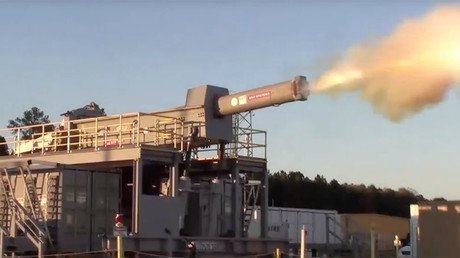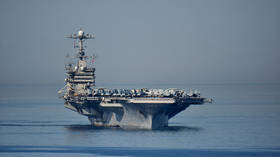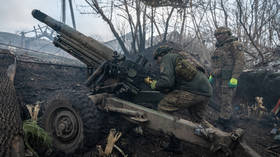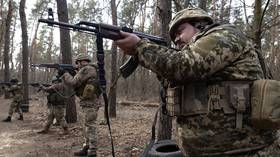Navy to scrap $500mn next-generation railgun
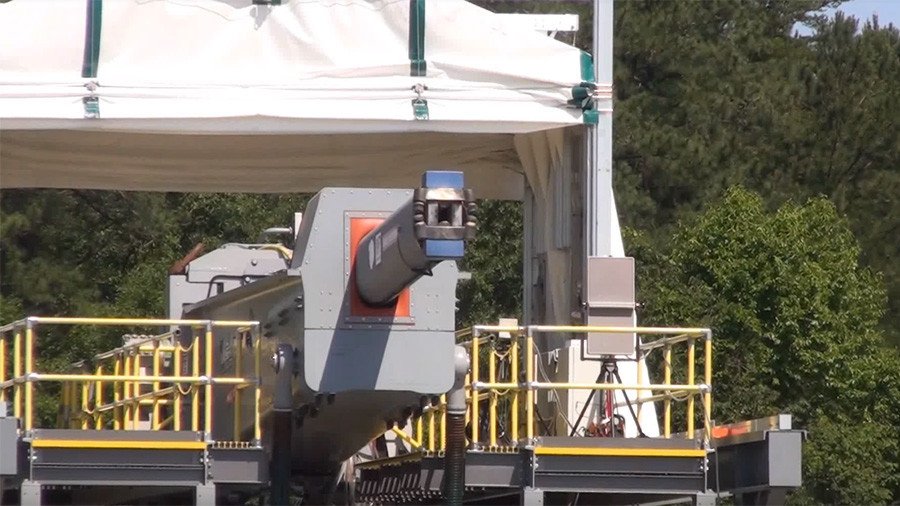
The US Navy is turning its attention away from a decade-long, electromagnetic railgun program, opting instead, for a less expensive alternative that uses the projectiles as ammunition in existing guns, rather than a next-generation weapon.
Last week, the Congressional Research Service released a report, which said the Pentagon is looking to divert from a decade-long electromagnetic railgun (EMRG) program, but are planning to use the projectiles developed in the program, which are compatible with its current powder artillery gun systems.
Instead of relying on traditional explosive propellants like gunpowder, EMRG uses electrical currents to fire a projectile at speeds of up to 5,600 mph, or more than seven times the speed of sound.
The Navy has been developing the EMRG since 2005 in conjunction with defense contractors General Atomics and BAE Systems. Testing the weapon has cost an estimated $500 million, according to Popular Mechanics.
The Office of Naval Research (ONR), which is focused on developing new technologies for the service, broke the world record for muzzle energy with an EMRG prototype in 2010. Researchers fired a 23-pound projectile at 32 megajoules, enough to propel a projectile up to 100 nautical miles away.
In July, the Navy released a video, showing they were able to fire 4.8 shells a minute. In 2013, the Naval Sea Systems Command called for the ONR to develop a railgun that could fire 10 shells a minute and store up to 650 shells.
In 2015, the Navy estimated that EMRG weapons could be installed on a Zumwalt (DDG-1000) class destroyer by the mid- 2020s.
However, the report states that there are “a number of significant development challenges” with the weapon which would require “years of additional development work,” adding, that “ultimate success in overcoming them is not guaranteed.”
Apart from the costs, the electromagnetic fields necessary to operate the weapons require a significant amount of energy, much more than most Navy vessels can currently generate.
Instead, the Department of Defense (DoD) has “particular interest” in a hypervelocity projectile (HVP) program, according to the report. The US Navy began the HVP program after they realized the low-cost guided projectiles designed for the EMRG could also be fired from their existing powder guns.
The projectiles are compatible with guns currently installed on cruisers, which provides the Navy with a “potential for rapidly proliferating HVP through the cruiser-destroyer force.” The Pentagon is also interested in the projectiles because they have the potential to be utilized “across multiple US military services.”
When fired from 5-inch powder guns, HVP projectiles can achieve a speed of Mach 3, half the speed of the EMRG, but twice the speed of conventional rounds fired from 5-inch guns.
The guided projectiles can also be used to intercept anti-ship cruise missiles (ASCMs) and anti-ship ballistic missiles (ASBMs).
“They hit with the impact of a train slamming into a wall at 100 miles per hour,” the report states, citing a piece from the Washington Post. “The high-speed, hence high-energy projectiles, which cost just $25,000, can radically improve fleet-protection capabilities: A barrage of them could counter an enemy’s more expensive anti-ship missiles.”
The Strategic Capabilities Office (SCO), an arm of the Pentagon created to develop new technologies, has reportedly been reallocating funds from the EMRG to the HVP program, which has the potential to leave the “supergun” project “dead in the water” by 2019, a defense contractor told Task and Purpose.
SCO spokesman Chris Sherwood said his division has not abandoned the EMRG program, but are focusing on “developing the [HVP] for use in existing powder gun systems to give the Navy and Army near-term, cost-effective long-range fires and missile defense solutions.”
“SCO shifted the project’s focus to conventional powder guns, facilitating a faster transition of HVP technology to the warfighter,” Sherwood told Task and Purpose. “Our priority continues to be the HVP, which is reflected in the program’s budget.”
Task & Purpose conducted an analysis of the Navy’s 2018 RDT&E funding request and found that funds for the Power Projection Applied Research fell more than $75 million due to cuts from railgun barrel testing.
“Money is being put into HVP, and not railgun projects, which is why the two are being split,” a senior legislative official told Task and Purpose. “We’ve been able to rescue some of this funding, but Big Navy sees different opportunities, and because [the railgun] is a major challenge, they don’t want to explore it.”
